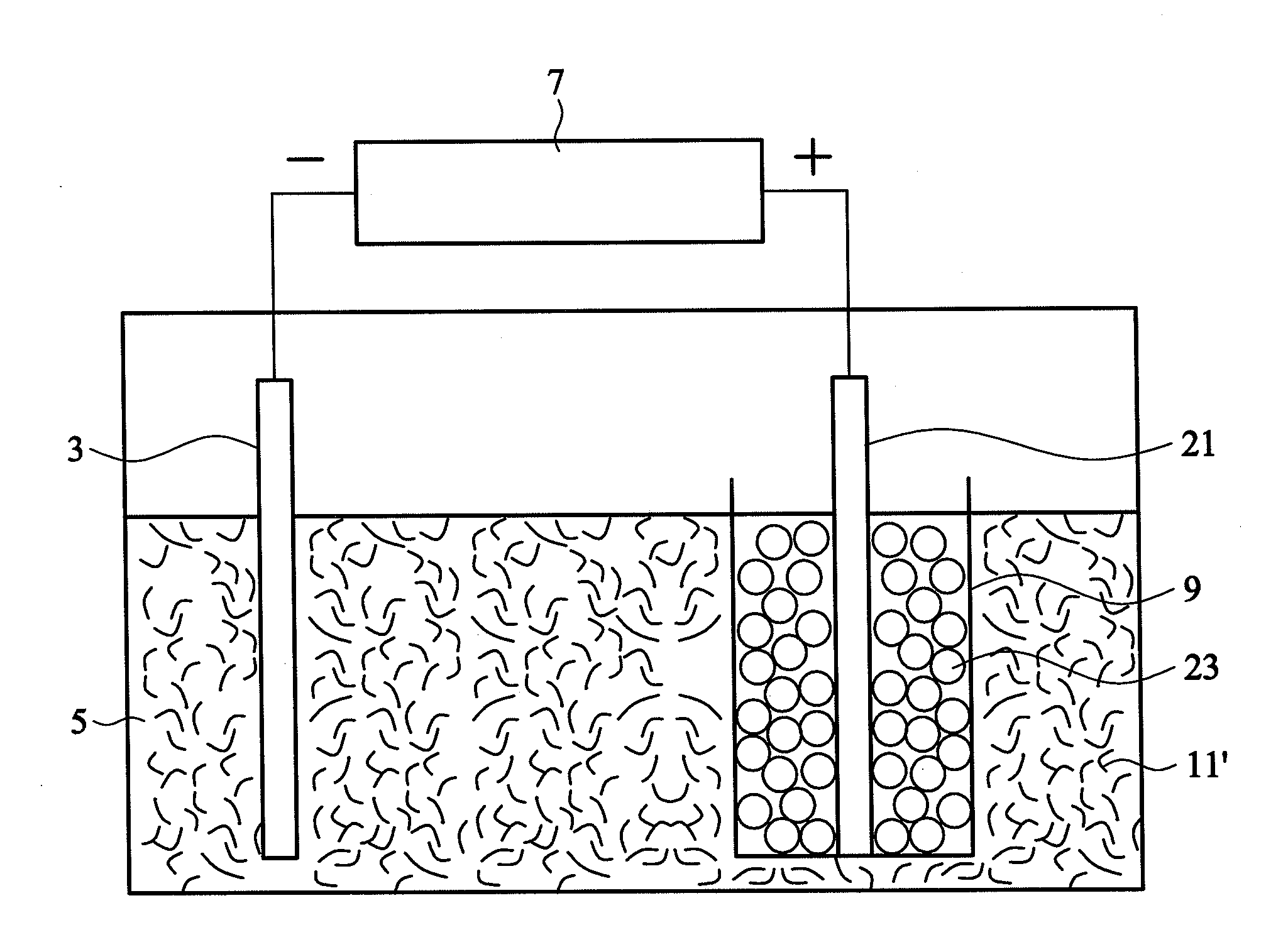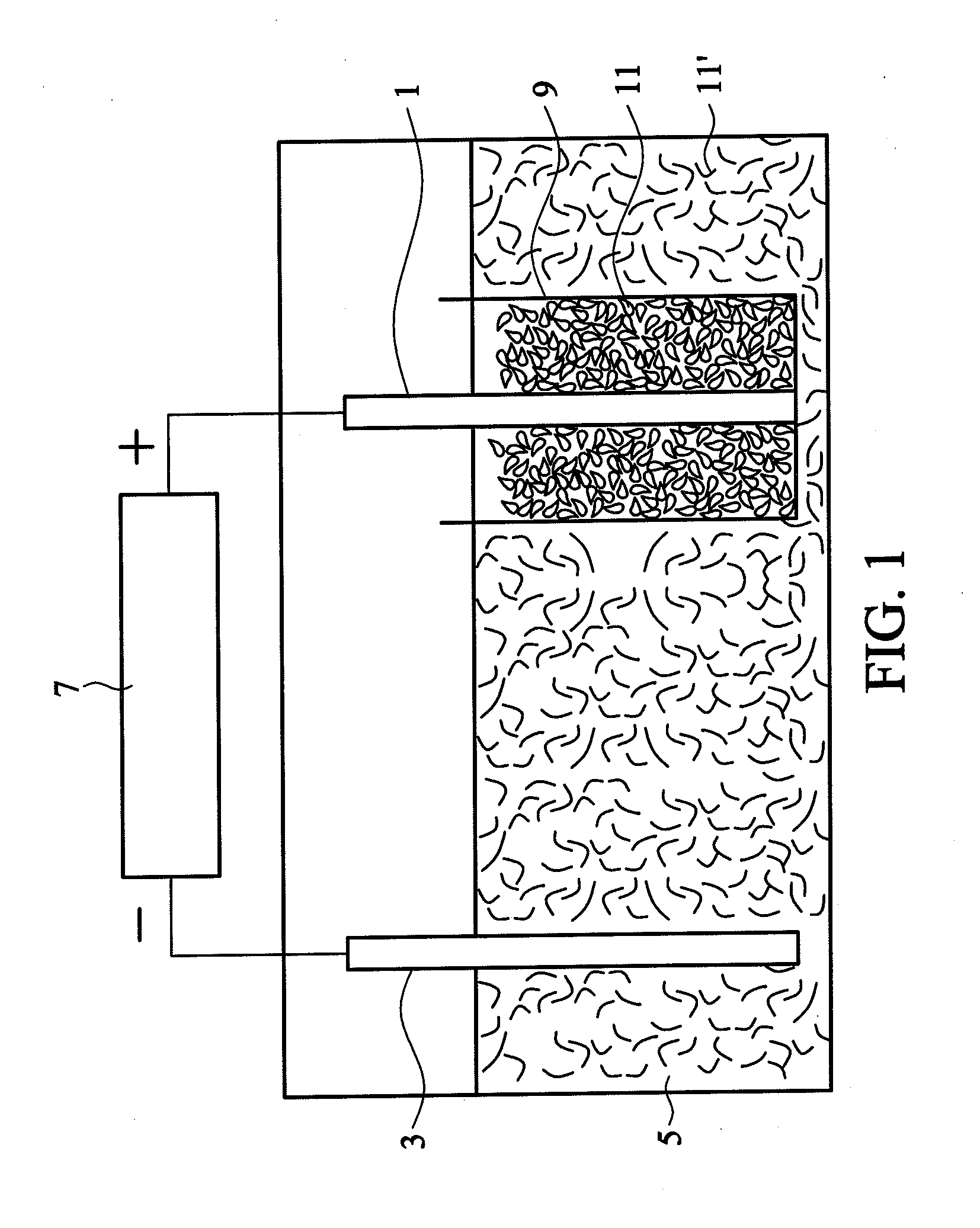Methods of forming graphene
a graphene and graphene technology, applied in the field of graphene formation, can solve the problems of the current bottleneck in the method of obtaining high-performance electricity and hydrogen storage materials, and the inability to form graphene of high yield by only electrolysis without other mechanical processes
- Summary
- Abstract
- Description
- Claims
- Application Information
AI Technical Summary
Benefits of technology
Problems solved by technology
Method used
Image
Examples
example 1
[0028]100 mL of a sulfuric acid solution (0.24M) was prepared as an acidic electrolyte having a pH value of about 0.7. A graphite plate (1.44 g and 20×20×2 mm, commercially available from Central Carbon Co., Ltd.) was wrapped in a semipermeable membrane (single-layered polypropylene with a pore size of 40 nm, commercially available from Celgard) and connected to a positive electrode of a direct current power supply. A platinum wire was connected to a negative electrode of the direct current power supply. Subsequently, the graphite plate wrapped in the semipermeable membrane and the platinum wire were dipped into the acidic electrolyte. A constant voltage of 2.5V was provided by the direct current power supply to process a pre-electrolysis for 1 minute, such that the graphite plate was completely impregnated with the electrolyte. Thereafter, electrolysis was performed at a voltage of 10V for 3 hours. During the electrolysis process, the graphite plate gradually exfoliated and the bla...
example 2
[0029]100 mL of a sulfuric acid solution (0.24M) was prepared as an acidic electrolyte having a pH value of about 0.7. Graphite particles (individual diameter of 3 μm, totally 2 g, commercially available from Central Carbon Co., Ltd.) and a platinum wire were wrapped in a semipermeable membrane (single-layered polypropylene with a pore size of 40 nm, commercially available from Celgard), and the platinum wire was connected to a positive electrode of a direct current power supply. Another platinum wire was connected to a negative electrode of the direct current power supply. Subsequently, the graphite particles and the platinum wire wrapped in the semipermeable membrane and the other platinum wire were dipped into the acidic electrolyte. A constant voltage of 2.5V was provided by the direct current power supply to process a pre-electrolysis for 1 minute, such that the graphite particles were completely impregnated with the electrolyte. Thereafter, electrolysis was performed at a volt...
PUM
 Login to View More
Login to View More Abstract
Description
Claims
Application Information
 Login to View More
Login to View More - R&D
- Intellectual Property
- Life Sciences
- Materials
- Tech Scout
- Unparalleled Data Quality
- Higher Quality Content
- 60% Fewer Hallucinations
Browse by: Latest US Patents, China's latest patents, Technical Efficacy Thesaurus, Application Domain, Technology Topic, Popular Technical Reports.
© 2025 PatSnap. All rights reserved.Legal|Privacy policy|Modern Slavery Act Transparency Statement|Sitemap|About US| Contact US: help@patsnap.com



